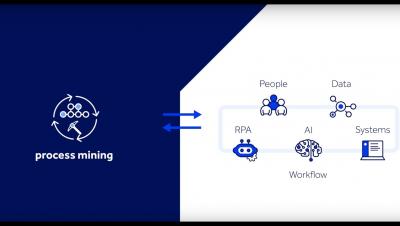Systems | Development | Analytics | API | Testing
August 2021
Automation isn't just for large enterprises: Here's why SMBs should adopt low-code automation
When you hear buzz words such as ‘Automation’, ‘Low-code’, ‘RPA’, or ‘Hyperautomation’, you may think it’s only reserved for the big-wigs or billion-dollar enterprises. Well, think again! If there’s one thing the last year has taught us, it’s the need to innovate, adapt, and rapidly conform to the changing landscape among organizations of all sizes in order to survive the turbulent climate.
Appian and Accenture bring speed, simplicity and confidence to auto and equipment finance
We’ve been speaking with many auto and equipment finance organizations over the last year, and they all say that their technology landscape is growing more complex by the day. The Auto and Equipment Finance Orchestration solution that Accenture has built with Appian seeks to address this.
Removing Barriers to Data with the Appian 21.3 Release
Enterprise data can be slow and difficult to manage for any organization. This is where low-code data comes in. Low-code data helps eliminate these challenges with a visual interface that makes it fast and easy to take action on data from any source. Introducing Appian 21.3: our latest platform release that removes barriers to data. Appian 21.3 offers major enhancements that make it easier for you to access, relate, and transform your enterprise data.
Public Interest Technology: Closing the Innovation Risk Gap, Part 2
Look around and you’ll see the benefits of hyperautomation everywhere as it scales business processes faster than a speeding algorithm, takes the friction out of customer engagement, and drives business transformation to the moon and back. In the long run, this trend will likely create a new generation of jobs. But in the short term, it may also raise anxiety among workers fearing job loss amid the post-COVID hyperautomation boom. To put this anxiety into perspective.
Appian Workforce Safety: On-site Reservations
21.3 Product Announcement Webinar
9 Crucial Low-Code Automation Capabilities to Evaluate
Low-code automation platforms enable businesses to rapidly automate their applications and workflows. Basic low-code tools can create applications that help users perform simple tasks. But rapid app delivery is only the beginning of what low-code can do. The most advanced low-code automation platforms deliver powerful business process automation capabilities.
Public Interest Technology: Closing the Innovation Risk Gap, Part 1
There’s no question that the benefits of hyperautomation are potentially limitless, with nearly endless ways to optimize efficiency, cost savings and competitive advantage.
"Automation Maturity": What It Is and How to Measure It
Since pneumatic tubes streamlined the transfer of documents across banks and mainframe computers revolutionized back-office processes, automation has been a driver of innovation and progress in financial services for over a century. In today’s digital world, automation’s latest iteration has the power to transform operations across departments and use cases: customer onboarding, underwriting, compliance, and more.
Complete Automation: Combining Knowing and Doing
Our announcement that Appian has acquired process mining innovator Lana Labs is a turning-point in automation, and more importantly, for our customers. The addition of native process mining makes Appian the world’s most complete Low-Code Automation Suite. We are coming together to create a unique offering with tremendous value.
Combining Knowing and Doing
How to Structure Low-Code Teams: The "Developer And ________" Approach
IT and development teams are embracing low-code for many reasons: It reduces technical debt. It improves collaboration with business users. And it makes you vastly more efficient by keeping things simple—including your application teams. Unfortunately, even as IT organizations embrace low-code, many still rely on bloated, heavily specialized development teams. They’re only scratching the surface of low-code’s power.
3 Ways to Navigate Disruption in the Energy Sector
Now more than ever, the energy industry is facing disruption that impacts costs, damages productivity, and threatens the success of the industry. To combat this, organizations are looking to implement new technology solutions that allow them to stay resilient and agile when the unexpected happens. Here are three of the most prevalent disruptors in the industry today, and how digital capabilities can help organizations respond.






